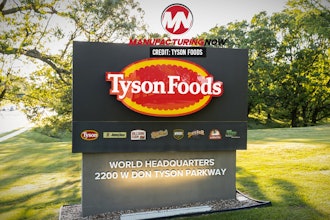In response to the growing demand for home-brewed instant coffee that delivers true “coffee shop” flavor, Starbucks came to Stellar wanting to build a unique soluble coffee plant. The award-winning facility in Augusta, Georgia, was designed to produce the company’s VIA instant coffee products, and it’s cutting-edge in every sense of the word.
Among the plant’s many innovations, food safety was a top priority. There are several lessons food and beverage manufacturers can learn from how Starbucks addressed this critical issue.
Producing Exceptional Food Products Starts With Safety
While other food categories are governed by regulations like 3-A from agencies such as the USDA and FDA, the soluble coffee sector doesn’t have a governing body or food safety guidelines. But, that didn’t mean Starbucks would “take a pass” on ensuring its VIA products are protected throughout the production process.
In fact, they went the other way and committed voluntarily to adhere to the British Retail Consortium’s (BRC) rigorous food safety and quality certification programs. Respected worldwide, the BRC Food Safety Standard has been achieved by more than 15,000 suppliers in over 100 countries, and is the first food safety standard benchmarked by the Global Food Safety Initiative (GFSI).
5 Ways Safety Is Designed Into The Starbucks Augusta Soluble Plant
In designing and building the VIA processing plant, Stellar and the Starbucks team looked closely at every aspect of the process and where contaminants could be introduced. Then we devised ways to address those potential food safety issues:
1. Back-in dock doors. Loading docks are a high-risk area for raw material and product contamination. Not only are there many contaminants present, the pressure gradients created by the opening and closing of facility and truck doors causes air movement that can make those contaminants mobile. Our response was to implement rubber-sealed doors that trucks back into when unloading raw material or picking up product. Employees open the truck door from inside the plant, where conditions are more carefully controlled.
2. Green bean receiving. It is common for coffee processing plants to have pits in the floor where the beans are dumped after receiving. Starbucks recognized the risk of harmful particles making their way into these pits, so we designed an area for receiving silos that are elevated off the floor and walled to minimize the risk of contamination.
3. Advanced automation. Look at photos of the plant and you will see some impressive technology. What you won’t see much of, ironically, is coffee beans. That’s because Starbucks has minimized human intervention to reduce the risk of product being contaminated by plant personnel. Instead, the beans are inside specialized pipes and equipment, blanketed by nitrogen after extraction. The entire process is run from a control room on the second floor, with every piece of equipment in the plant integrated with the Starbucks office network and easily accessible for real-time data review and troubleshooting. The only manual intervention occurs when green beans are unloaded into the process, in the green-bean receiving area, and when ground coffee is unloaded into the extractors.
4. Clean-in-place (CIP) capability. In traditional processing plants, cleaning begins once an entire process is complete. At the Augusta plant, Starbucks invested in a clean-in-place (CIP) system that enables cleaning to take place as each step in the process finishes. Instead of manual switchover, mix-proof valve technology enables fast, efficient, highly sanitary operations. Water from each CIP cycle can also be used as solution for the first rinse of the next cycle, which prevents waste.
5. Separation of raw and finished product. To prevent cross-contamination from raw material to finished product, the plant has a green bean side that is completely separated from the finished side. Everything from traffic patterns to waste streams were taken into account in the facility’s design to ensure raw and cooked materials never cross paths.
A Simple Cup Of Coffee That’s Safe By Design
Starbucks is a successful company in part because it is always innovating behind the scenes. The simplicity of brewing a cup of VIA coffee in your kitchen is ultimately made possible by a complex food safety process that’s been fine-tuned to perfection.
Todd Allsup is VP, Food & Beverage Facility Services at Stellar.
About Stellar
Stellar is a fully integrated firm focused on planning, design, pre-construction, construction, refrigeration, mechanical & utility, building envelope, and total operations & maintenance services worldwide. Visit the company's blog at www.stellarfoodforthought.net or learn about its projects at stellar.net.






















